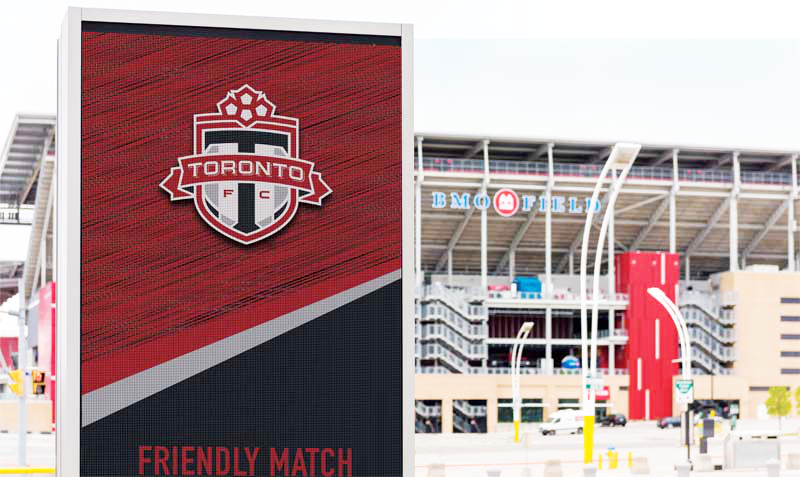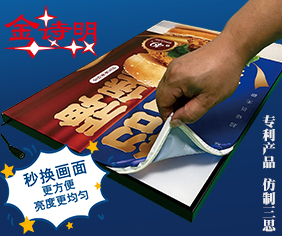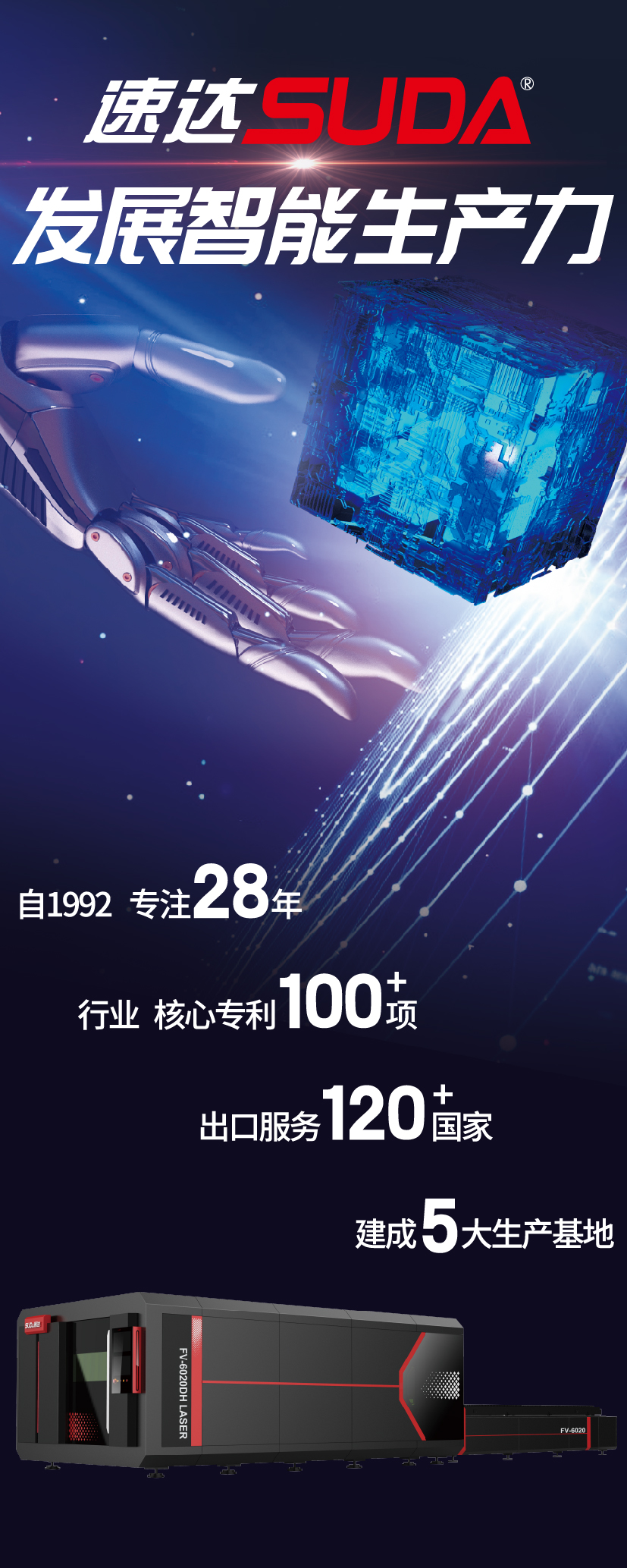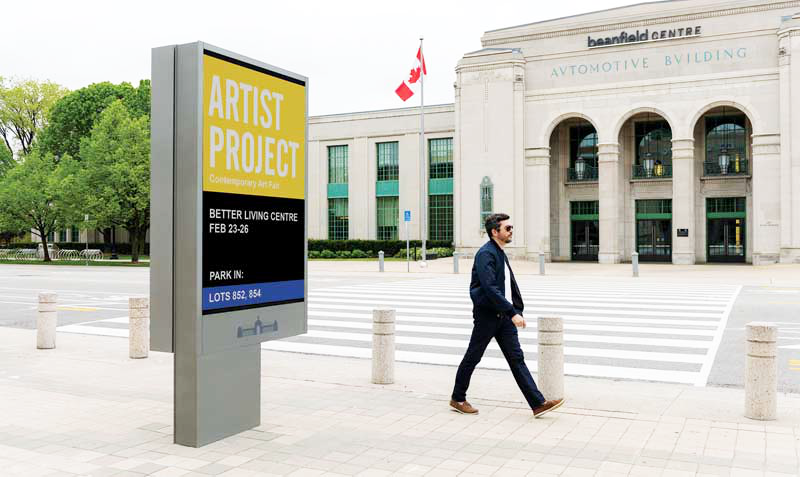
Toronto’s Exhibition Place, a publicly owned mixed-use district, is home to Canada’s largest entertainment complex and plays host to a wide range of trade shows, sports, special events, conferences, conventions, consumer shows and meetings, attracting more than 5.5 million visitors per year. Navigating the 78-ha (192-acre) site can be challenging, as these disparate events are held in different facilities at various times of the year, with different parking lots allotted for arriving vehicles. Few repeat visits are ever the same.
多伦多展览中心是一个公用混合用途之地,拥有加拿大最大的娱乐中心,可举办各种贸易展览、体育活动等各种会议,每年都能吸引超过550万名游客来此地一游。当然,要在这个78公顷(192英亩)的场地透彻地摸清方向可能还具有一些挑战,所有不同的活动在不同的设施中进行,到达的车辆会分配在不同的停车场。
Given the facilities’ events and functions change daily, Exhibition Place requires a wayfinding system that can dynamically manage and route its vehicular and pedestrian traffic on an as-needed basis. With this need in mind, local environmental graphic design (EGD) firm Entro recently developed a series of digital pylons to replace older static signs throughout the site.
由于每天的活动都不一样,展览场所需要一个多功能的数字标识导视系统,对车辆和行人交通进行动态的管理。考虑到这一需求,当地的Environmental Graphic Design 公司最近开发了一个数字标识架,以取代整个展览广场上旧的静态标识。
Preventing frustration
预防旧标识导视系统出现的错误
The project began in 2014, when the management of Exhibition Place and of Maple Leaf Sports & Entertainment (MLSE)—owner of the Toronto Football Club (FC) and Marlies, which play soccer and hockey at Exhibition Place’s Bank of Montreal (BMO) Field and Ricoh Coliseum, respectively—approached Entro to discuss the possibility of digital directional signs. As the site’s largest non-exhibition tenant, MLSE was interested not only in promoting its teams’ home games, but also in helping to prevent visitors’ frustration with finding parking spots.
该项目始于2014年,多伦多足球俱乐部FC的所有者MLSE与展览场地的蒙特利尔银行(BMO)、理光体育馆、Entro一同参与讨论,探讨如何建立新的数字标识导视系统。作为该网站最大的非展览组织,MLSE不仅对策划的活动感兴趣,而且还希望新的数字标识导视系统能帮助游客能更快地找到停车位,为他们指明方向。
“Exhibition Place has many parking spaces that sit empty for much of the year, only to fill up quickly when there’s a big game,” explains Aleks Bozovic, design director for Entro. “There are also a number of different entrances and exits, so it’s easy for people to end up driving around a lot more than they would like.”
事实上,展览场所有许多停车位,一年中,大部分时间都处于空置的状态,只有在有大型活动时才能被填满。此外,停车场有很多不同的入口与出口,所以说,一个内容清晰的标识在这样的场所是非常重要的。
At the time, some directional information was provided with large vinyl overlays in painted steel frames on concrete pedestals, which were movable only by forklift. Changing their temporary messages was only possible by swapping out the vinyl graphics, which took a lot of work compared to updating a digital screen. It was also unclear which sign positions were optimal for the area.
之前,一些在底座的彩钢框架上具有乙烯基覆盖层,临时信息与内容的改变,只能通过更换乙烯基图形来实现,这与数字屏幕相比,不但花费的工作时间长,也不能清楚地体现出哪个标识是该区域的最佳选择。
“Working with Exhibition Place staff, we undertook an extensive planning study for the site’s walking and driving paths,” says Bozovic. “The staff had first-hand knowledge of all of the ins and outs, including where traffic would cause bottlenecks and which events would bring visitors to which corners of the property.”
有关负责人Bozovic说:“我们与展览广场的工作人员配合工作,对整个展览广场的驾驶路径进行了广泛的研究与规划,工作人员掌握所有进出口的第一手知识,包括交通会造成瓶颈的地方,以及哪些游客行走的路径等。”
Fitting in
配套设计
At the same time, since Exhibition Place is designated as a heritage city property, any new signage would need to mesh well esthetically with the existing landscape.
由于展览广场被指定为文化遗产之地,任何新的标识都需要与现有的景观进行精细地配合。
“The design couldn’t be overly intrusive or decorated,” says Bozovic.
Bozovic强调:“设计不能过度美化装饰,会掩盖、抢走现有设施的风头。”
Entro met with ASI, an archaeological and cultural heritage services firm, and the municipal government’s own heritage preservation services department to ensure the project’s appearance and installation requirements would support archeological sustainability and respect the heritage nature of the site.
Entro会见了考古文化遗产服务公司ASI,以及市政府的文物保护部门,他们共同协商,确保项目在外观和安装方面,能够把握考古学的可持续性,尊重遗址的遗产性质。
The study identified six optimal positions for fixed, double-sided digital pylons, including two on Princes’ Boulevard, Exhibition Place’s central thoroughfare, and four along the site’s secondary streets, which are named after Canada’s provinces and territories.
协商后,他们确定了双面数字标识架固定的六个最佳位置,其中两个位于王子大道、展览广场的中央通道上,另外四个设立在以地区命名的次级街道上。
“We presented our work to the heritage services team in early 2016,” says Bozovic. “Initially, our plan included placing one of the pylons near a historic fountain where Prince’s Boulevard, Manitoba Drive and Saskatchewan Road meet. We had to move that sign slightly further west until they were satisfied we had reduced the visual impact on the fountain. We also needed a bylaw variance from the city because there would now be more than one sign per entranceway.”
Bozovic说:“在2016年,我们向考古文化遗产服务公司介绍了我们的工作,最初,我们的计划包括将其中一个标识架设立在一个古老的喷泉附近,附近临近王子大道、曼尼托巴大道和萨斯喀彻温路。为了不让新建立的项目在外观上抢了原有设施的风头,我们将标识稍微向西移动,减少了对喷泉的视觉影响。在完成第一个标识的工作后,我们开始为每个入口设立有差异化的多个标识。”
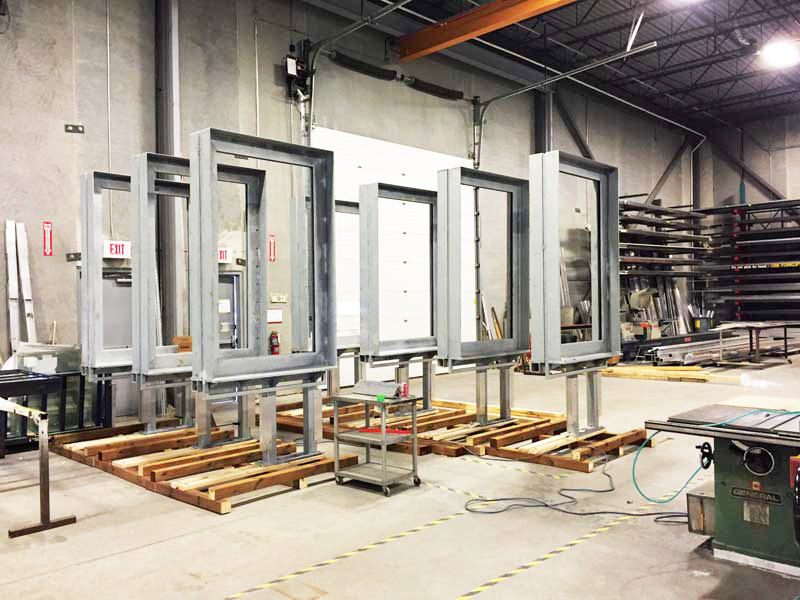
The sign bylaw group’s input was incorporated into the specifications from the beginning. One concern that came up through consultations was screen brightness, for example, so light sensors were incorporated to enable automatic adjustments throughout the day and the signs would be turned off completely at night, from at least 11 p.m. to 7 a.m., unless needed for events during those hours.
标识法规团队的从这个新项目一开始就纳入了规范。例如,通过协商,他们首先重视的问题是屏幕的亮度,为此,他们对光传感器进行整合,以实现全天的自动调整,从晚上11点至早上7点完全关闭标识,除非有特殊活动事件的需要,可以有变动。
As for content, the bylaw group consultations set a minimum of 10 seconds for static image retention and a maximum of one second for transitions between images.
在标识呈现的内容方面,团队协商后,决定为静态图像所呈现的内容设置保留10秒的时间,图像之间的转换为1秒的时间。
“These signs are easy to look at and not a lot of transitions are needed anyway,” Bozovic explains. “They mostly display event names and logos with the corresponding parking lot information. As mentioned, the primary purposes of this system are parking management and bottleneck prevention. Any other content comes from the permanent tenants, like MLSE, and mentions upcoming games and events. We made some early suggestions regarding image size and transitions, but all of the content is created and driven by facility staff.”
Bozovic解释说:“标识的内容一方面涉及流量的信息,一方面涉及一些活动和事件的信息与报道,无论哪方面,都需要清晰、一目了然,无需很多转换。如前所述,该系统的主要目的是停车管理和瓶颈预防。我们提出了一些有关图像大小和转换的建议,所有内容最后由设施人员创建和驱动。”

Perfecting the specs
完善规格
When choosing hardware for the system, meanwhile, the goal was to balance the need to support the relatively hefty weight of the internal digital components while still appearing sleek and understated—i.e. modern and dynamic, yet unobtrusive.
与此同时,当为系统选择硬件时,要考虑是否能支持内部的数字组件,数字组件对硬件有相对较高的需求,同时还需要在设计上表现出时尚和低调,不显眼。
Entro specified 3-m (9.8-ft) tall aluminum structures, adorned only with a simplified version of the Exhibition Place logo, to showcase 1.2 x 1.8-m (4 x 6-ft) light-emitting diode (LED) screens with 6-mm (0.24-in.) pixel pitch. The screen size would be large enough to provide suitable visibility for drivers in motion, while the fine pixel pitch would ensure appropriate resolution and readability for pedestrians at a closer distance.
Entro指定3米(9.8英尺)高的铝制结构,用于展示一些重要的地理位置,以1.2 x 1.8米(4 x 6英尺)为大小,以6 -mm(0.24英寸)为像素间距的发光二极管(LED)屏幕做为简化版装饰,屏幕尺寸足够大,以便为驾驶员提供合适的视野,而精细的像素间距可确保距离较近的行人能获取一定的分辨率和可读性。
“We went through several iterations of our schematic designs, looking at different paint samples until we found the right grey metallic shade that worked well with the surroundings, with a flake that reduced its shininess,” says Bozovic. “Once we specified what we thought was most appropriate, we ran on-site tests with a variety of LED screens from different manufacturers.”
Bozovic说:“我们多次进行了原理图设计的修改,查看不同的油漆样品,直到我们找到合适的灰色金属色调,认可它能与周围环境协调一致,而不缺少光泽。当我们落实好各个部分的选样后,我们就会使用来自不同制造商的LED屏幕进行现场测试。”
With the project timeline involving several years of development, one challenge was keeping up with advances in LED technology.
从多年发展的项目来看,一个较大的挑战就是我们的设施需要跟上LED技术的进步。
“As each year went by, we looked into new LED screen tests, because the technology was changing and getting better with time,” Bozovic says.
Bozovic说:“每年,我们都在研究新的LED屏幕测试项目,技术变化的非常迅速,我们需要更好的技术为我们的生活服务。”
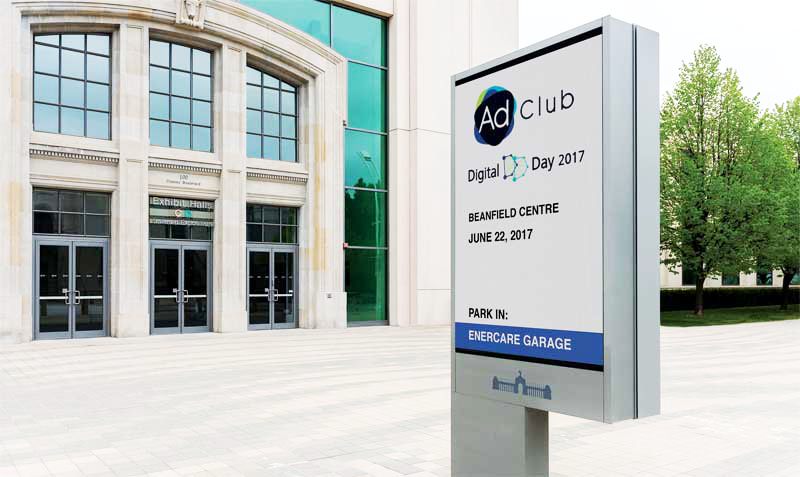
WSI Sign Systems of Bolton, Ont., built the aluminum enclosures, including a sample cabinet for test-fitting the screens. Media Resources International (MRI) of Oakville, Ont., was selected to provide screens using its proprietary LEDs—which reportedly offer a maximum of 3,500 nits of brightness—and to handle on-site installation of the cabinets. They were installed in fall 2016, with the last one set up that December.
位于安大略省博尔顿市的WSI Sign Systems公司负责制造铝制外壳,包括一个用于测试安装屏幕的样品柜。安大略奥克维尔的媒体资源国际公司MRI选择使用一种最新技术的LED屏,据报道,该LED能提供高达3,500尼特的亮度,它们在2016年秋季安装,最后一个安装在十二月份。
Meanwhile, the municipal government had asked for all of the older ‘temporary’ signs to be removed if located within 9 m (30 ft) of the new permanent signs’ locations, as one of its goals with the project was to reduce on-site clutter.
与此同时,市政府要求,在位于新标识9米(30英尺)范围的位置内,所有旧的标识要全部被删除,以减少该项目现场混乱的场面。
“They still have a few of those static signs left, in cases where they’re not close to the digital pylons,” says Bozovic. “There are also still event banners and other temporary signs, which our wayfinding system is not meant to replace.”
Bozovic说:“展览广场边仍然有一些静态标识的迹象,但是,我们建立的数字标识导视系统都已经取代了他们的角色。”
